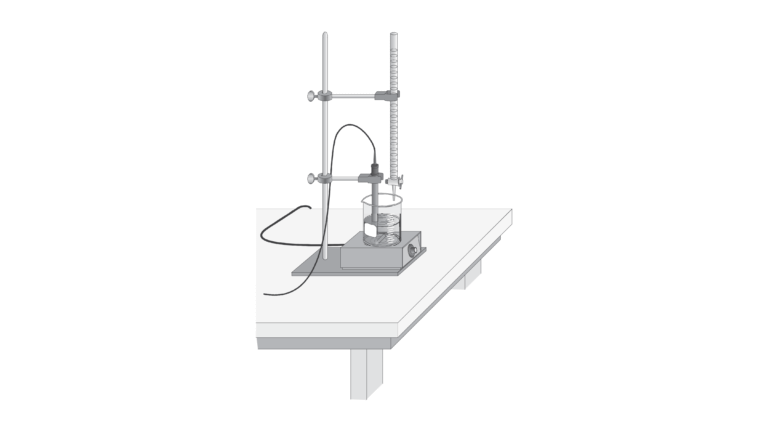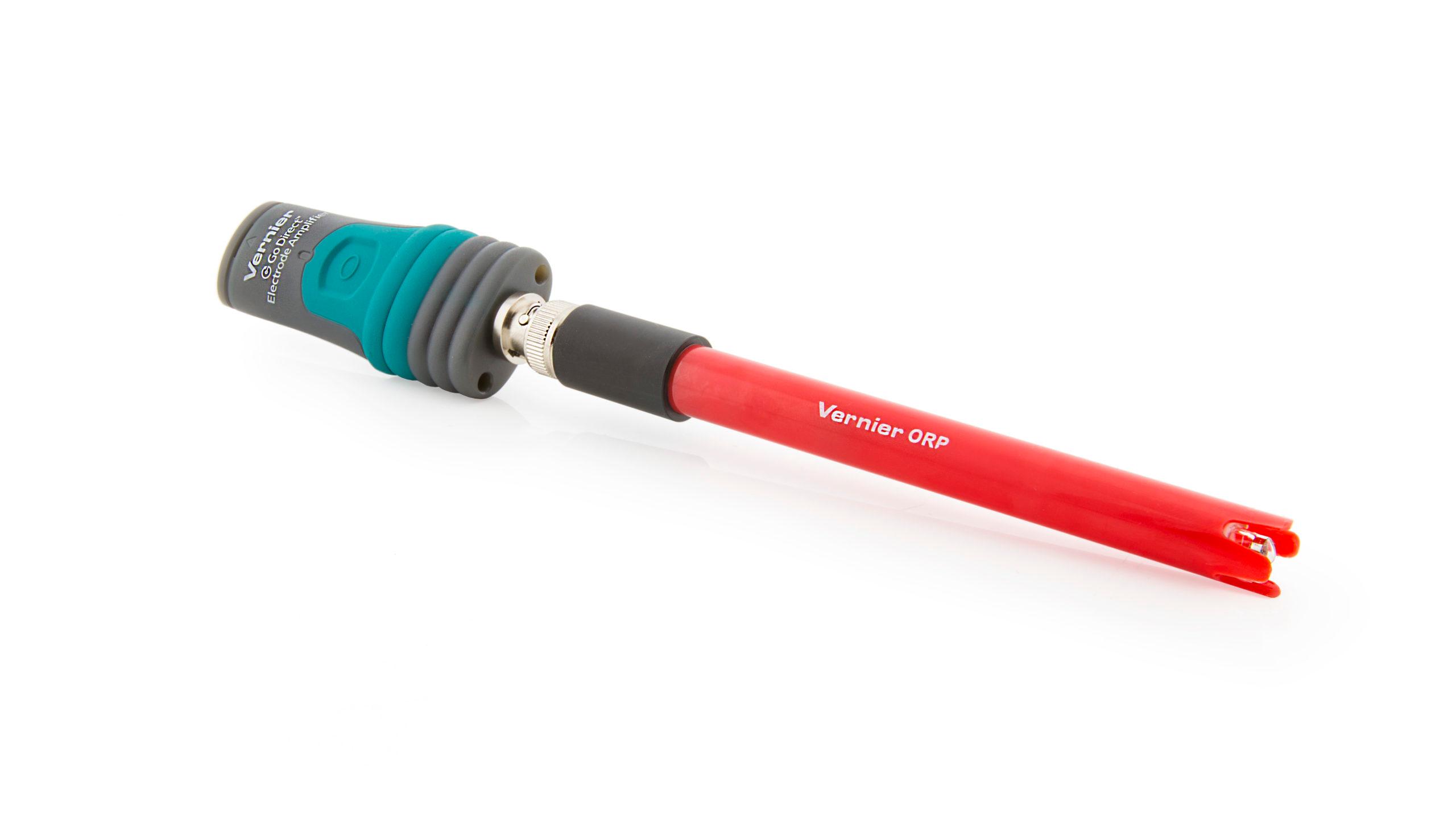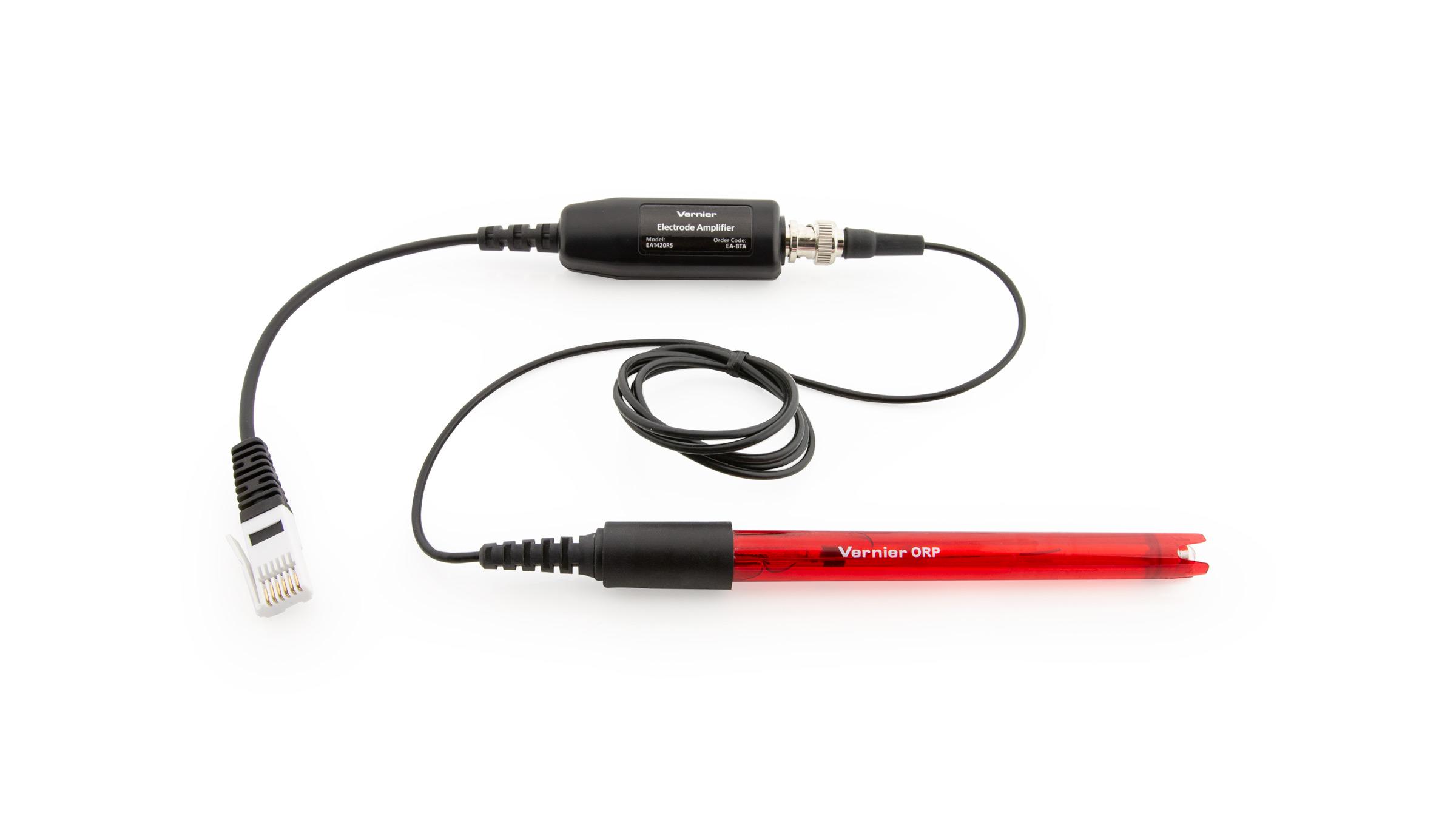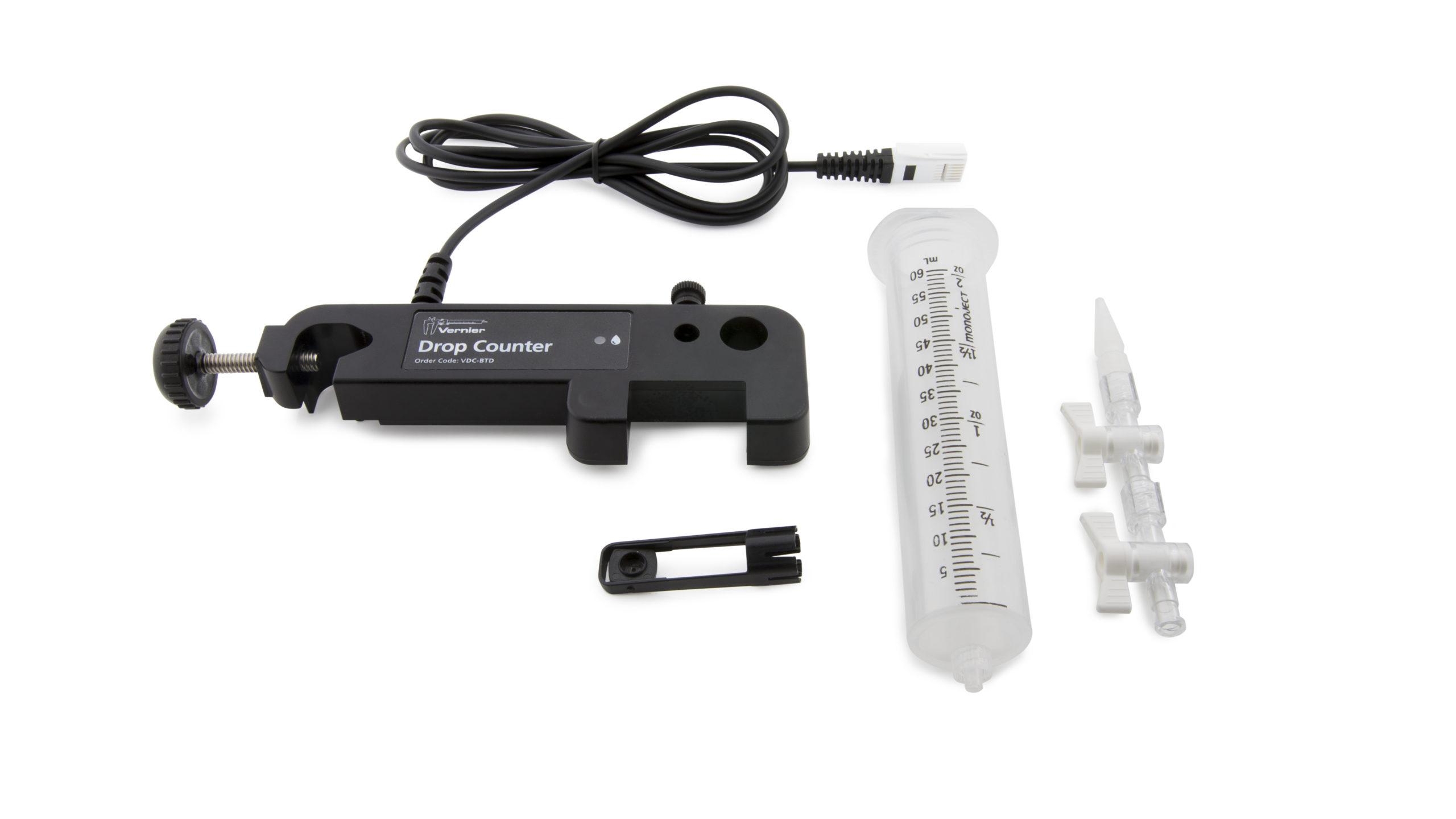
Introduction
One method of determining the concentration of a hydrogen peroxide, H2O2, solution is by titration with a solution of potassium permanganate, KMnO4, of known concentration. The reaction is oxidation-reduction and proceeds as shown below, in net ionic form.
In this experiment, you will use an ORP (Oxidation-Reduction Potential) Sensor to measure the potential of the reaction. Your data will look like an acid-base titration curve. The volume of KMnO4 titrant used at the equivalence point will be used to determine the concentration of the H2O2 solution. Your sample of H2O2 will come from a bottle of ordinary, over-the-counter hydrogen peroxide purchased at a grocery or a drug store. The concentration of this product is labeled as 3% mass/volume, which is ~0.9 M.
Objectives
In this experiment, you will
- Conduct the potentiometric titration of the reaction between commercially available hydrogen peroxide and potassium permanganate.
- Measure the potential change of the reaction.
- Determine the concentration of the hydrogen peroxide solution.
Sensors and Equipment
This experiment features the following sensors and equipment. Additional equipment may be required.
Ready to Experiment?
Ask an Expert
Get answers to your questions about how to teach this experiment with our support team.
- Call toll-free: 888-837-6437
- Chat with Us
- Email support@vernier.com
Purchase the Lab Book
This experiment is #32 of Advanced Chemistry with Vernier. The experiment in the book includes student instructions as well as instructor information for set up, helpful hints, and sample graphs and data.






